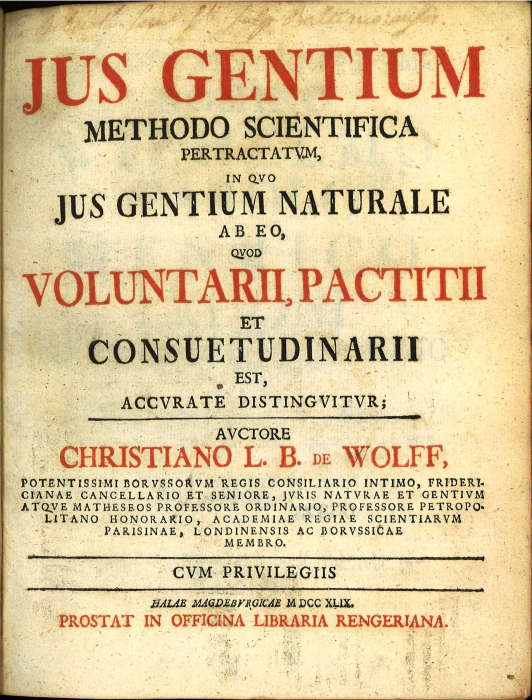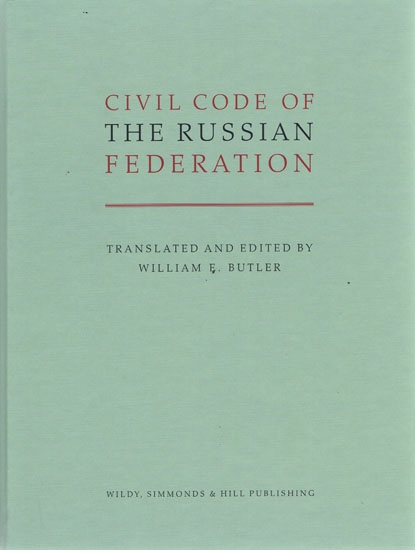The right of every person exists only in the framework where it does not intersect with the rights of other people. It follows that even minor actions that go beyond the normal legal regime of a subject can lead to a violation of the rights of another person. This issue has worried lawyers for centuries in a row. It has always been not only popular, but also relevant, since the legal relations of the private sector of law never stand still. They develop parallel to the process of human evolution. Today, the protection of civil rights is an entire institution that has an internal structure, features, characteristics, etc.
It should be noted that the main methods of protection that can be seen today in the civil legislation of the Russian Federation were formed back in ancient Rome. Of course, the modern legal rules governing the protection of civil rights are in many ways different from the ancient Roman ones. However, they adopted the main idea and features obtained as a result of the activities of Roman lawyers. To date, the institute of protection is so formed that the methods began to unite in special forms, which we will discuss in this article.
Legal regime of protection in ancient Rome
Before you understand the essence and list the forms of protection of civil rights, you should plunge into the history of this institution. It has been known since the days of Ancient Rome. Initially, there was no single Roman law that we are studying today. There were separate norms, morals and customs. One of them is the priority of power. The bottom line is that the one who possessed the greatest power has always been the right one. In other words, any dispute was resolved through bloodshed. Naturally, this could not be allowed in Roman civilized society at that time. Therefore, norms were created that clearly regulated various forms of protection of civil rights.
One of them is the priority of power. The bottom line is that the one who possessed the greatest power has always been the right one. In other words, any dispute was resolved through bloodshed. Naturally, this could not be allowed in Roman civilized society at that time. Therefore, norms were created that clearly regulated various forms of protection of civil rights.
Types of protection of civil interests in Ancient Rome
With the development of classical private Roman law, special methods of protecting subjective interests were formed. The method of force has completely outlived its own and has been replaced by a lawsuit. Most of the disputes in Rome were resolved through litigation. To date, the following methods of protecting civil rights in the trial of ancient Rome are known:
- Claims in relation to man and things.
- The lawsuit of "good conscience."
- Direct suit.
- Condition.
- A lawsuit by analogy.
- A lawsuit with fiction.
The difference between all claims is in their subject and legal nature. All civil rights are distributed among themselves, which means that their protection was carried out in different ways. Subsequently, it began to acquire various legal aspects, which over time turned this insignificant category into a whole institution.
Institute of Defense in Contemporary Law of the Russian Federation general statements
As mentioned earlier, the protection of civil rights is a whole institution, which is included in the modern civil legislation of the Russian Federation. He is maximally adapted to the state legal climate, the level of legal culture of the population, the moral principles of society. Forms, ways of protecting civil rights are structural elements of an institution that have different ways of manifesting, but with the same goals. The main source of the institute is the Constitution of the Russian Federation, and the main legislative act is the Civil Code of the Russian Federation.

By improving the effectiveness of the civil bloc, scientists divided the institute into two sectors - jurisdictional and non-jurisdictional.Over time, these industries began to be called forms, as they are implemented in different procedural and procedural order. Nevertheless, absolutely all forms of protection of civil rights are aimed at protecting and, in some cases, at restoring the interests and legal capabilities of subjects of a civil bloc.
Jurisdictional form of protection
The jurisdictional form of protection of civil rights is the ability to protect their rights with the help of specially authorized public authorities. Thus, the interaction of the citizen and the state. By protecting with the help of a jurisdictional form, a person can exercise his right to demand assistance from the state, and this, in turn, is an obligation to protect citizens. The jurisdictional form is divided into two types: administrative and judicial. In each case, a person interacts differently with state bodies, which is manifested in the manner and method of implementing a particular jurisdictional form.
Judicial form for the protection of civil rights
Article 10 of the Civil Code of the Russian Federation states that everyone can appeal to the court in order to protect their violated rights and interests. The judicial form is directly enshrined in article 11 of the Civil Code. It indicates the authorities (courts) that are authorized to protect civil interests. Norma is the guarantor of the functionality of the defense institution as a whole. This right can be realized by filing a lawsuit, after which the norms of not only civil, but also procedural law come into force. A lawsuit is the main binding legal category uniting the institution of the protection of civil rights and the scope of procedural activities.
It indicates the authorities (courts) that are authorized to protect civil interests. Norma is the guarantor of the functionality of the defense institution as a whole. This right can be realized by filing a lawsuit, after which the norms of not only civil, but also procedural law come into force. A lawsuit is the main binding legal category uniting the institution of the protection of civil rights and the scope of procedural activities. Also, in the judicial form itself, the basic constitutional right of each person to protect his rights (not only civil) in the courts is manifested. There are many remedies included in the judicial form. Let's consider them further.
Also, in the judicial form itself, the basic constitutional right of each person to protect his rights (not only civil) in the courts is manifested. There are many remedies included in the judicial form. Let's consider them further.
Judicial protection methods
In total, there are 12 methods of judicial form of protection of civil rights specified in article 12 of the Civil Code of the Russian Federation, namely:
- recognition of rights and interests;
- restoration of legal status, regime, position that existed before the moment of violation;
- recognition of any transaction invalid;
- recognition of the invalidity of the decision of the meeting;
- recognition of an act of an authority as invalid;
- compensation for losses incurred;
- claim forfeit;
- compensation for moral harm;
- complete termination of legal relationship;
- non-acceptance of an act by a court;
- any other means that may be provided by law.
There is also a way of self-defense, which, in essence, is a non-jurisdictional form of protection of the rights and interests of citizens. As for all the above methods, they can be carried out exclusively in court.
Administrative form
Administratively, everyone can defend their violated rights and interests only in individual cases, since there is strict regulation of this form of protection of subjective civil rights and interests. An administrative way exists only if the authorized public authority takes measures to protect civil rights. This, in turn, makes it possible to challenge his decision by contacting a higher authority. Among the state bodies that can implement protection measures are the Federal Service for Intellectual Property, Patents and Trademarks, the Federal Antimonopoly Service, etc.

The administrative form is ineffective, since any decision of a certain executive body can be appealed in court.
Non-jurisdictional form
In the theory of civil law, there is such a thing as non-judicial forms of protection of civil rights. Very often they are identified with a non-jurisdictional form, which is fundamentally wrong.The non-jurisdictional form implies the complete absence of any role of the state in the process of regulation and implementation of the protection of civil rights. At the same time, the non-judicial form includes an administrative procedure of defense, in which the executive bodies play a rather important role. As for the non-jurisdictional form, it is practically not developed in modern civil law of Russia. It has only a small fixation in the article of the Civil Code, which regulates self-defense of civil rights and interests. Consider its features.
Self-defense: legal features
Article 14 of the Civil Code of the Russian Federation establishes the possibility of any person to exercise self-defense of their civil interests. The same article states that it should be commensurate and in no case can go beyond the scope of the actions necessary to stop the violation of the law. The problem is that the legislator enshrined the rule on self-defense, but did not give a clear explanation of this legal phenomenon. The Civil Code lacks rules that allow us to talk about its methods. In the theory of civil law, there are ongoing discussions about the existence of a non-jurisdictional form and self-defense as its main element.
Conclusion
So, in the article we found out what constitutes the protection of civil rights. The concept, forms of this civil law construction allow us to see the difference in the ways of implementing the institution of protection. In conclusion, the following fact should be noted. Contrary to all existing opinions and theories, the main forms of protection of civil rights are divided into two main elements, although this may be completely inappropriate, given the current legal climate of the Russian Federation.
